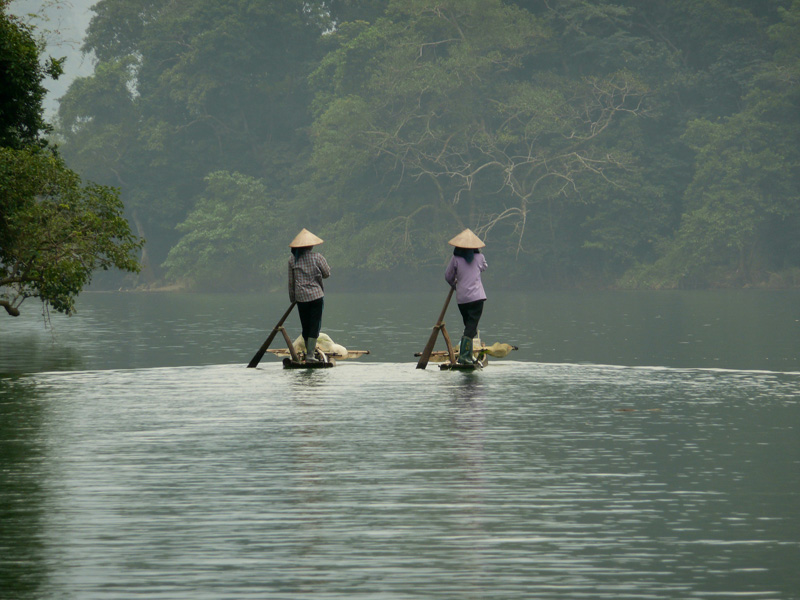Bac Kan: Beauty Amid Chaos

Bac Kan has seen many battles throughout its history. Yet, despite all the chaos, it has retained its beauty and never gave up in the first place, that is why it is still standing and strong up to this day.
In July 25, 1948, a war between Vietnam and France broke out at Phu Phang Post in the Northern Province of Bac Kan's Bac Thong District, the foreign country being one of Vietnam's arch enemies in its entire history. It was supposed to be a sure win for France as it intended to use the Northern Vietnamese resistance base known as Viet Bac as their strategic position. But perhaps surprisingly and definitely unexpectdly, Vietnam's Battalion 11 killed 100 French soldiers, the first time it defeated its long-time enemy. This made the Vietnamese soldiers gain experience and enough confidence to help them win in other future wars: in 1950 to liberate the border province; in 1954 during the famous Dien Bien Phu Battle; and the entire 30-year struggle for Vietnam independence.
Yet despite its war-torn history, Bac Kan has several natural sights that tourists keep coming to. Thanh Temple, Puong Cave, Cho Don Safe Zone, and Dau Dang Waterfall are just some of them. Phu Thong town is located at a crossroad between Highway 3 and Road 258, about 18 kilometers from Bac Kan's capital. Thai Nguyen and Ha Noi in the South, Cao Bang in the North, and Ba Be Lake in the Northwest, are UNESCO-recognized world heritage sites. The Phu Thong Post where the legendary war between Vietnam and France occurred is also identified as a historical relic site in the country.
Thanh Temple in Phuong Linh Commune is the biggest, most beautiful temple in the commune built on top of Don Dien Hill. It is said to be a place of worship for a prince who was known for stopping gangs of robbers in the region. According to legend, during a fight with the rebels, the prince was killed. His head fell off, but his body remained on the horse's back until reaching Don Dien where it finally fell off. The temple was built to worship him as a saint, hailed as of royal stature, and a yearly spring festival is celebrated every first lunar month in the name of the courageous prince.
Puong Cave is situated on the Nang River in Ba Be District, about 5 kilometers from Cho Ra Town. It is approximately 300 meters long and 30 meters high. Stalactites fill up the cave. Bats also reside inside, but they have grown accustomed to visitors coming in and out of the area. The cave was said to be formed when Nang River ran through Lung Nham limestone mountain millions of years ago. After passing through the mountain, Nang River flows down to Hua Tang Hamlet where it is blocked by hundreds of giant stones to create the also famous Dau Dang Waterfall.
Cho Don Safe Zone is one of Vietnam's most revolutionary bases. Located at Bang Lung Town in the district of the same name, it is among the relics of the Viet Bac revolutionary base during the monumental victory against France after almost a decade of struggle for independence against the foreign enemy. And it is because of this historical win that President Ho Chi Minh especially selected the structure as an ATK (Vietnamese abbreviation for “Safe Zone”). It also became a critical political, economic, and military area for Vietnam's national independence where it was declared by the governement as “historical treasures.” September 2 is celebrated as National Day and anniversary for the August 1945 revolution.
Chien is one of the region's specialties, a type of fish which weighs up to a gigantic 10 kilograms, something that tourists always find amazing. And talking about tourists, the government plans to further preserve and even upgrade its historical relics to boost the town's tourism. Bac Kan's past struggles and glories is what makes it beautiful amid all the chaos after all this time, something that veterans, local residents, and even foreign visitors appreciate, a beautiful scar that immortalizes Vietnam for generations and generations to come.









